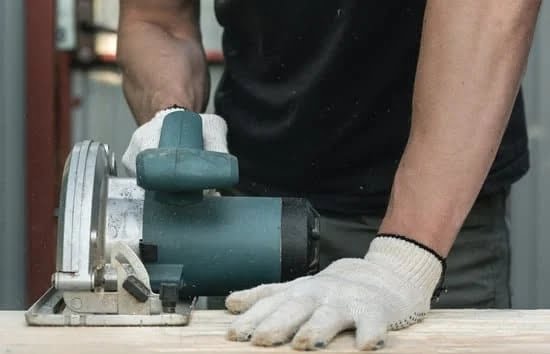Woodworking is an intricate craft that demands precision and accuracy in every step of the process. One essential tool that helps achieve this level of accuracy is a compass. In this article, we will explore how to use a compass in woodworking, including the types of compasses available, proper setup, techniques for creating curved designs, advanced applications, and troubleshooting common issues.
In woodworking, precision is paramount, whether you are measuring, marking, or cutting materials. A compass is a versatile tool that aids in achieving this level of precision by allowing woodworkers to create perfect circles or arcs with ease. Understanding the importance of using a compass in woodworking can elevate the quality and intricacy of your projects.
Throughout this article, we will delve into the various aspects of using a compass in woodworking – from understanding its functions to mastering advanced techniques. We will also provide tips and tricks for troubleshooting common issues that may arise when using a compass. By the end of this article, readers will have a comprehensive understanding of how to harness the power of a compass to enhance their woodworking skills and produce high-quality results.
What Is a Compass in Woodworking
A compass in woodworking is a vital tool that allows woodworkers to create precise and accurate curved designs. Unlike the traditional navigational compass, a woodworking compass is designed specifically for marking and creating arcs, circles, and other curved designs on wood. It consists of two arms connected by a pivot point, with one arm holding a sharp point for marking the wood and the other arm holding a pencil or pen for drawing curves.
There are several types of compasses used in woodworking, each with its own unique features and advantages. These include spring dividers, wing dividers, and proportional dividers. Spring dividers are the most common type and are suitable for general layout work, while wing dividers have adjustable tension for more precise markings. Proportional dividers are ideal for scaling up or down measurements accurately.
Setting up a compass for woodworking requires proper technique to ensure precision and accuracy in the final design. First, loosen the pivot screw to adjust the distance between the arms according to the desired radius or diameter of the curve. Once set, tighten the pivot screw to secure the arms in place. Ensure that the pivot point moves smoothly without any wobbling or slipping to guarantee clean markings on the wood surface.
- Spring dividers: Suitable for general layout work
- Wing dividers: Adjustable tension for precise markings
- Proportional dividers: Ideal for scaling up or down measurements accurately
- Loosen the pivot screw to adjust distance between arms
- Tighten pivot screw securely once set
- Ensure smooth movement of pivot point without wobbling or slipping
Now that we understand what a compass is in woodworking and how it functions, let’s delve into how this tool can be used effectively to create curved designs on wood surfaces.
Types of Compasses Used in Woodworking
When it comes to woodworking, precision and accuracy are key to creating beautifully crafted pieces. One tool that is essential for achieving accurate measurements and curved designs is the compass. In this section, we will explore the different types of compasses available for woodworking and how they can be used to enhance your craft.
There are several types of compasses that woodworkers can choose from, each with its own unique features and benefits. Here are some of the most common options:
- Divider Compass: This type of compass is great for marking and measuring distances or diameters on wood.
- Beam Compass: Ideal for creating larger circles and arcs, the beam compass consists of two adjustable metal legs connected by a wooden or metal beam.
- Wing Divider Compass: These compasses have a locking mechanism that allows for precise adjustments, making them great for intricate designs.
Now that you are familiar with the different types of compasses available, it’s important to understand how to properly set up a compass for woodworking. Whether you are using a traditional hand-held compass or a larger beam compass, the setup process remains relatively similar.
- Select a sharp pencil or marking tool to insert into the compass.
- Loosen any locking mechanisms or screws on the compass to adjust the width or radius as needed.
- Once adjusted, tighten the screws or locking mechanisms to secure the measurements in place.
Understanding how to use a compass in woodworking and being knowledgeable about the various types available will help you achieve precise and accurate results in your projects. Whether you’re creating simple circular outlines or intricate curved designs, having the right compass for the job is essential.
How to Properly Set Up a Compass for Woodworking
A compass is a vital tool in woodworking, especially when precision and accuracy are essential. Properly setting up a compass for woodworking is crucial to ensure that the tool functions effectively and produces the desired results. In this section, we will discuss the step-by-step process of preparing a compass for use in woodworking.
First, it is important to choose the right type of compass for the specific woodworking project. There are different options available, including wing dividers and pencil compasses, each with its own advantages and uses. Once the appropriate type of compass is selected, it’s time to prepare the tool for use.
Begin by adjusting the legs or arms of the compass to the desired spread or radius needed for the woodworking project. This can be done by loosening the locking mechanism on the legs or arms, then carefully adjusting them to the required measurement. It is important to double-check and ensure that both legs or arms are set to the same measurement for symmetrical designs.
Next, tighten the locking mechanism securely to hold the legs or arms in place. This will prevent any unwanted movement during use, which could result in inaccuracies in measurements or designs. Once the compass is set up and locked into position, it is ready for use in creating precise markings and designs on wood surfaces.
Properly setting up a compass for woodworking is an essential foundational step that directly impacts the quality and accuracy of your work. By following these steps, woodworkers can ensure that their compass is prepared for use in creating intricate and precise designs with ease.
| Step | Description |
|---|---|
| 1 | Choose the right type of compass based on project requirements |
| 2 | Adjust legs/arms to desired spread or radius |
| 3 | Tighten locking mechanism securely |
Using a Compass to Create Curved Designs in Woodworking
When it comes to creating intricate and elegant curved designs in woodworking, a compass can be an invaluable tool. Whether you’re crafting a decorative piece, designing furniture, or incorporating curves into your projects, mastering the use of a compass is essential for achieving smooth and precise results. In this section, we will explore various techniques and tips for using a compass to create curved designs in woodworking.
Understanding the Basics
Before delving into the techniques, it’s important to understand the basic principles of using a compass for curved designs. A compass consists of two arms – one with a pointed end that serves as the pivot, and another with an adjustable pencil or blade. The distance between the pivot and the pencil/blade determines the radius of the circle or curve that will be drawn. Ensuring that the compass is set up correctly is crucial for achieving accurate results.
Choosing the Right Compass
Selecting the right compass for creating curved designs is essential. There are various types of compasses available, including traditional hand-held compasses, beam compasses, and wing dividers. Each type has its own advantages and applications depending on the specific woodworking project. Consider factors such as precision, ease of adjustment, and durability when choosing a compass for creating curved designs.
Techniques for Creating Curves
When using a compass to create curved designs in woodworking, there are several techniques that can help achieve smooth and precise curves. One common technique involves anchoring one end of the pivot arm at a fixed point while adjusting the other arm to draw a perfect arc or circle.
Another technique involves utilizing multiple pivot points to create complex curves and patterns. Additionally, practicing consistent pressure and maintaining steady movement while drawing with the compass can contribute to achieving high-quality results.
Mastering these techniques can significantly enhance your ability to incorporate elegant curves into your woodworking projects while ensuring precision and accuracy throughout the process.
Advanced Techniques for Using a Compass in Woodworking
Woodworking is not just about creating straight lines and angles. Using a compass allows woodworkers to incorporate intricate and curved designs into their projects, adding a touch of elegance and sophistication. In this section, we will explore advanced techniques for using a compass in woodworking, including how to create elaborate patterns and shapes.
Creating Intricate Designs
One of the most common uses of a compass in advanced woodworking is to create intricate designs such as floral patterns, mandalas, or other decorative elements. By adjusting the width and depth of the compass arm, woodworkers can create precise and symmetrical designs that add visual interest to their projects. It’s important to practice on scrap wood before attempting intricate designs on your final piece to ensure precision and accuracy.
Segmented Turning
Another advanced technique for using a compass in woodworking is segmented turning. This technique involves cutting small pieces of wood into precise shapes and assembling them into geometric patterns using a compass to ensure uniformity and symmetry. Segmented turning can produce stunning results when combined with various wood species and colors.
Inlay Work
Using a compass for inlay work allows woodworkers to create precise circles or arcs for decorative accents or functional details such as joinery. Inlay work often requires extremely accurate measurements and cuts, making the compass an essential tool for achieving perfection in these details.
By mastering these advanced techniques for using a compass in woodworking, artisans can elevate their projects from simple constructions to works of art that showcase their skill and creativity. With patience, practice, and attention to detail, woodworkers can achieve remarkable results that set their creations apart from the ordinary.
Troubleshooting Common Issues When Using a Compass in Woodworking
When using a compass in woodworking, it is essential to understand and address common issues that may arise during the process. By troubleshooting these problems effectively, woodworkers can ensure that they achieve accurate and precise results in their projects.
One common issue when using a compass in woodworking is “compass slippage”. This occurs when the legs of the compass do not hold their position firmly, resulting in inaccurate measurements or designs. To fix this problem, it is important to check and adjust the tension of the compass legs. Make sure that they are securely locked in place before marking or drawing on the wood.
Another issue that woodworkers may encounter is “uneven curves or circles”. This can happen when the compass pivot point is not properly aligned or when pressure is not evenly applied while drawing with the compass. To address this problem, double-check that the pivot point is centered and secure. Additionally, apply consistent pressure while drawing with the compass to create smooth and even curves.
Lastly, “inaccurate measurements” can be a common issue when using a compass in woodworking. This can occur due to misalignment of the legs or pivot point, resulting in incorrect dimensions for curved designs. To fix this problem, always double-check the setup of the compass before making any marks on the wood. Ensure that both legs are aligned with each other and that the pivot point is correctly positioned.
By being aware of these common issues and knowing how to fix them, woodworkers can confidently use a compass in woodworking to achieve precise and accurate results in their projects.
| Common Issue | Solution |
|---|---|
| Compass Slippage | Check and adjust tension of compass legs |
| Uneven Curves or Circles | Double-check pivot point alignment, apply consistent pressure |
| Inaccurate Measurements | Double-check alignment of legs and pivot point before marking |
Conclusion
In conclusion, the use of a compass in woodworking is an essential tool for achieving precision and accuracy in creating curved designs. Understanding the different types of compasses available and how to properly set them up is crucial for successful woodworking projects. By following the step-by-step guide provided in this article, woodworkers can effectively use a compass to create smooth and precise curves, as well as explore advanced techniques for intricate designs.
It is important to remember that using a compass in woodworking requires patience and practice. By mastering the techniques and tips outlined in this article, woodworkers can elevate their craftsmanship and bring their creative visions to life. Additionally, troubleshooting common issues when using a compass, such as slipping or inaccuracies, will help woodworkers overcome obstacles and continue honing their skills.
Ultimately, the key takeaway from this article is that learning how to use a compass in woodworking opens up a world of possibilities for creating unique and intricate designs. The precision and accuracy achieved with a compass can take woodworking projects to the next level, allowing woodworkers to showcase their skills while adding depth and dimension to their creations.
Whether working on basic curved designs or exploring advanced techniques, incorporating a compass into woodworking practices is an invaluable skill for any enthusiast or professional in the craft.
Frequently Asked Questions
What Is the Use of Compass in Carpentry?
The compass is a crucial tool in carpentry for drawing and marking circles or arcs on wood. It helps carpenters achieve precision and accuracy when cutting or shaping curved pieces of wood.
How Do You Use a Compass for Dummies?
Using a compass for dummies involves adjusting the radius to the desired measurement, then placing the sharp end on the starting point and rotating the compass to draw a circle or arc. It’s essential to keep the compass steady and secure while drawing.
How Do You Use a Compass Measuring Tool?
To use a compass measuring tool, first adjust the radius according to the required measurement. Then place the pointed end of the compass on one end of what you want to measure, and extend the other end to mark or measure out that distance on another surface. This ensures accurate measurements in carpentry work.

Hi everyone! I’m a woodworker and blogger, and this is my woodworking blog. In my blog, I share tips and tricks for woodworkers of all skill levels, as well as project ideas that you can try yourself.




